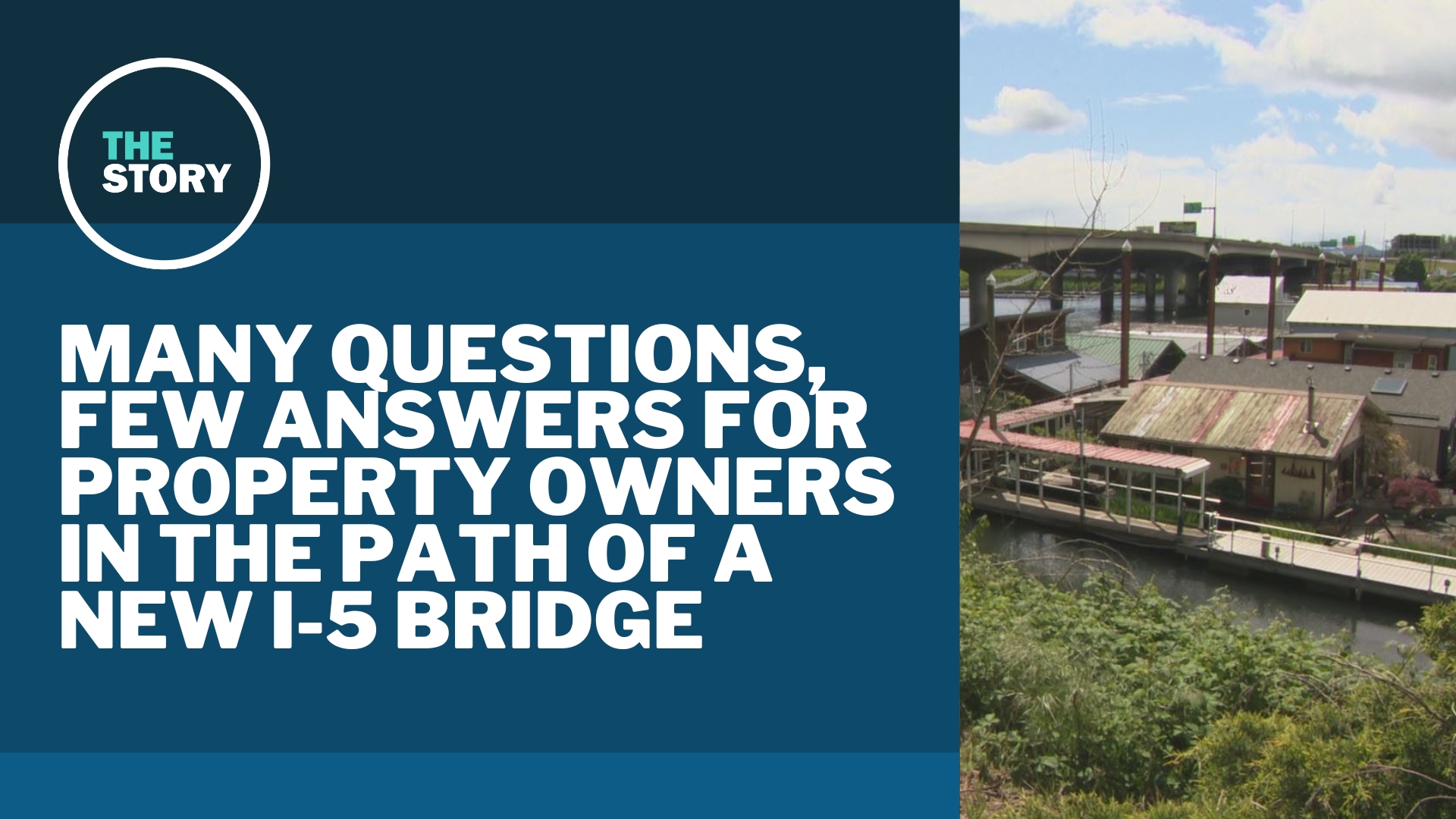VANCOUVER, Wash. — The Interstate Bridge Replacement (IBR) is still slowly moving through the federal environmental review process, aiming for 2026 to start construction on the $6 billion megaproject that will replace the Interstate 5 bridge over the Columbia River, extend a light rail line to Vancouver and upgrade much of the surrounding five miles of freeway.
Those add-ons are going to take up additional space along I-5, raising the specter of eminent domain. IBR isn't far enough along to start acquiring land or even release an official list of needed properties — but some people who are probably in the way have started to connect the dots, and several of them told KGW that they're frustrated by a lack of definitive information from officials.
Liz Schaub has lived in her house in Vancouver's Shumway neighborhood for 33 years, and she said it was supposed to be her "forever home" — but then about a year ago, IBR staff approached her with a request to conduct survey work on the property.
"We got a letter in the mail, and my husband was like, 'Uh, hon? You need to come in here,'" she said. "And so he read it and I'm like, 'Well, that's not good.'"

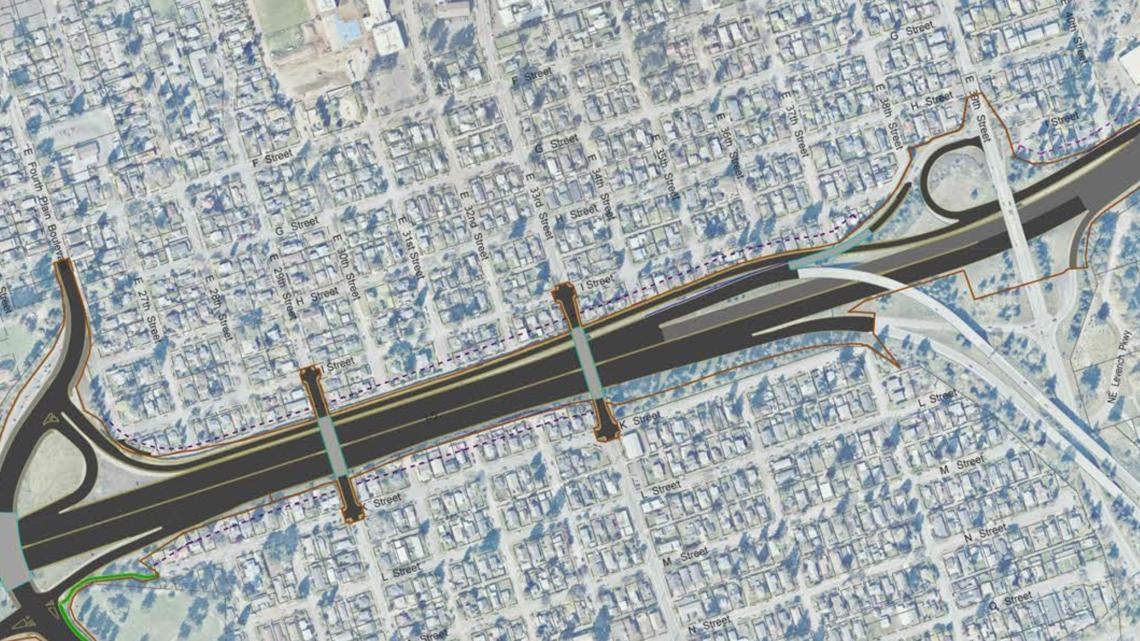
Schaub lives almost two miles north of the Interstate Bridge itself, but her street is right next to the I-5 interchange with State Route 500, where the IBR program wants to add a bypass offramp so drivers heading for Fourth Plain Boulevard from I-5 south can exit without having to cross through the stream of cars merging from SR-500.
The freeway embankment by the interchange already runs right up against the neighborhood street, so the new ramp would likely require property acquisitions.

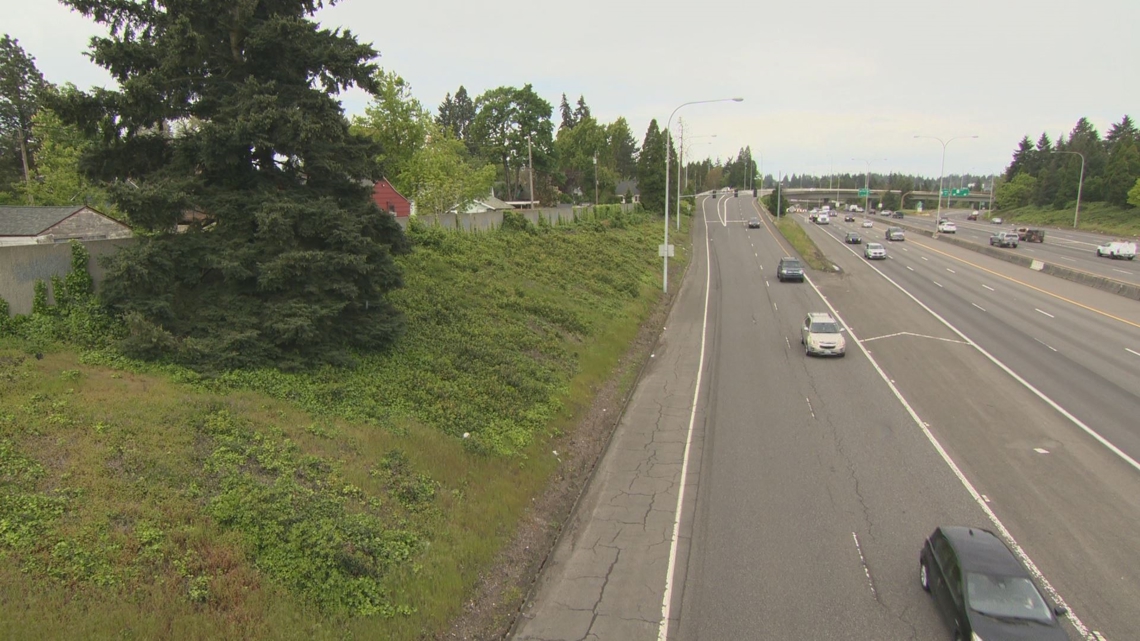
Sara Whitney rents her house one block north of Shaub, and she said she hasn't heard anything directly from IBR — but her landlords found out, and they mentioned it to her.
"As soon as I heard, as soon as I kind of like, figured out what was going on, I freaked out. I was pretty scared," she said. "I was like, 'Am I going to have to move in the next few months? Should I re-sign my lease?' It was actually right before my lease got re-signed, about two months ago. So I was wondering if I should re-sign, I was wondering if I should just move and get it out of the way, if it's getting taken anyway. But I kind of calmed down since then, since I figured out it might be a little while."
Draft EIS map
Maps released by IBR so far show the proposed ramp without precisely indicating which properties are in the way — but there's another map that spells things out.
As part of the ongoing federal environmental review process, the IBR team has to create a Supplemental Environmental Impact Statement (SEIS), a collection of documents that will outline every aspect of the project in fine detail, with lots of studies and data — including a list of properties that may need to be acquired. The "supplemental" part refers to the fact that IBR's version is officially being filed as a revision to an earlier version.
An initial version of the document, known as the Draft SEIS, will be released for public comment and review — but the scheduled release date has been pushed back multiple times, most recently from spring 2024 to an unspecified date later in the year — another delay for property owners who were previously expecting definitive answers right around now.

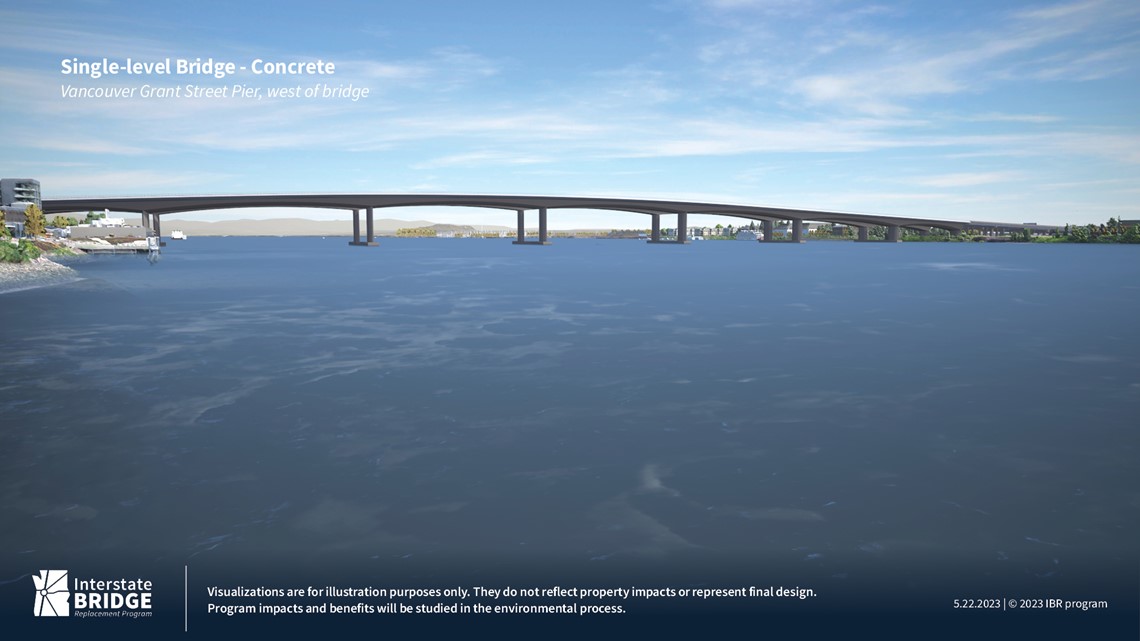
"They come in and they talk about, you know, 'It's going to be fair, it's going to be equitable, the people that are going to build are going to be-' And I'm like, I don't care about that. I want to know if what you're going to do with my house — if anything," said Brenda Palmer, who also lives a block away from Schaub. "And then we'll talk about fair and equitable, for the price you give me."
But while the official Draft SEIS is still missing in action, a group of local activists and advocacy groups calling themselves the Just Crossing Alliance was able to find an early look. The group has been campaigning against IBR's current design, arguing that the project should just consist of a like-for-like bridge replacement, without the associated freeway upgrades.
"The priority of the seismic replacement has been used as a catch-all to bring in this other freeway expansion for five miles," explained Just Crossing Alliance spokesman Chris Smith. "We'd love to see the scope narrowed and therefore the cost reduced, so that those funds could go to other very important uses."
A few months ago, the group filed a public records request with Metro, asking for any pieces of the Draft SEIS that the IBR team had shared with the government agency for review. They got back dozens of documents, totaling more than 1,000 pages, and posted them on their website (KGW submitted its own records request to verify their authenticity and got back the same set of documents).
The documents represent a jumble of pieces, only a fraction of the full SEIS, and date references in the text suggest that some of them were sent to Metro more than a year ago, so they could be outdated — which is essentially what IBR told KGW when asked for comment.
"Since the version made available through the request was released, the document has gone through, and continues to go through, several rounds of vetting and revision," IBR wrote in a statement.
Even so, the documents do offer some significant new insights, including a color-coded map of "Potential Property Acquisitions."

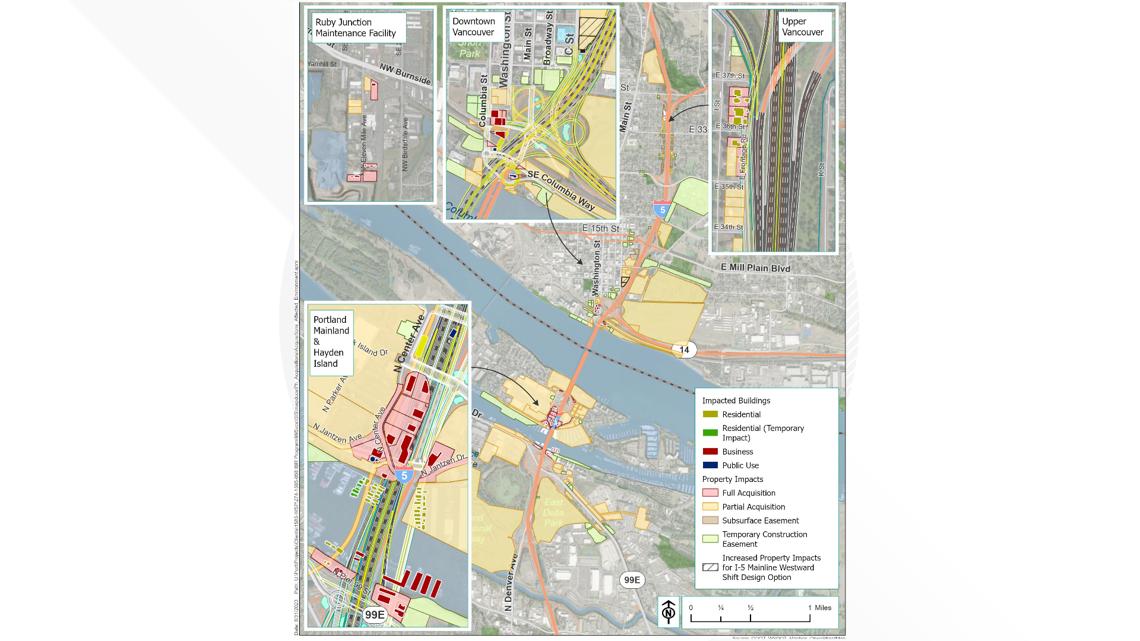
The associated document states that the project may need to fully or partially acquire a total of 176 parcels, which would displace 43 residential units and 33 businesses.
The biggest cluster of acquisitions is on Hayden Island, where the freeway will need to shift west to connect to the new bridges. Two houseboat docks in the North Portland Harbor are also apparently in the way.
Across the river in downtown Vancouver, the six-story Hurley office building overlaps with the path of the light rail extension, and the adjacent headquarters of Pacific Energy Concepts appears to be in the way of a local street extension.

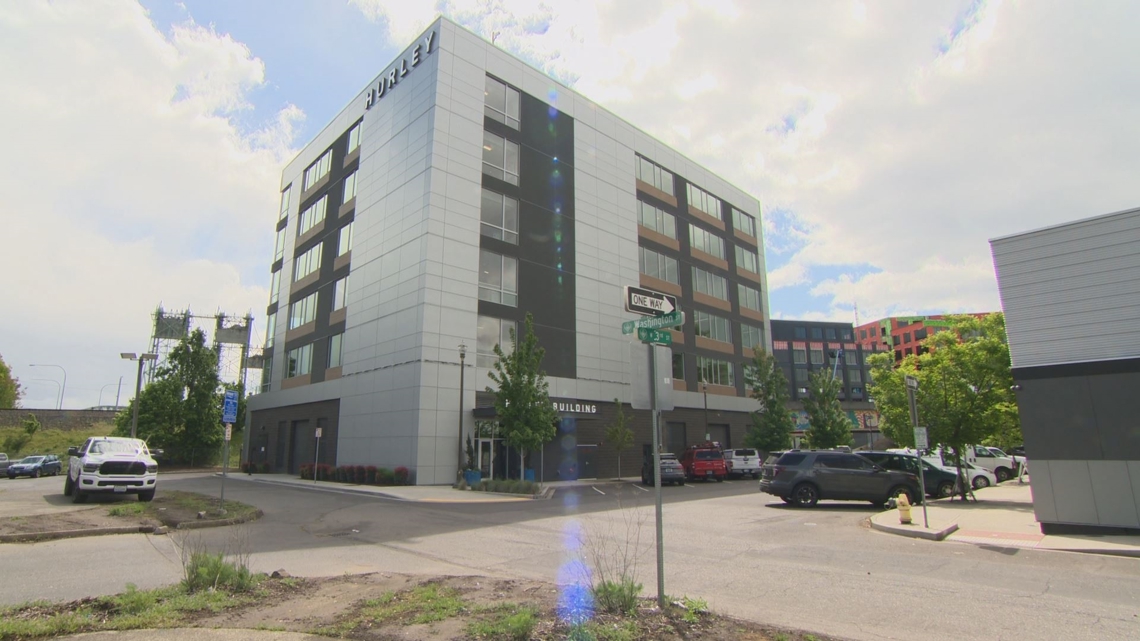
"All the drawings and diagrams, none of them I've seen — they all include mowing down my building," said Pacific Energy Concepts CEO Keith Scott. "But also, (IBR) won't let me know if that's the case or not."
Scott said he's been trying to start making contingency plans for a move, and IBR has been responsive when he's reached out — but without the kind of definitive answers he's been looking for.
"Without them being fully funded, they were like, 'Hey, we can't, we can't — this is, you know, two steps ahead of where we're really at right now,'" he explained.
Up near the SR-500 interchange, all of Whitney's block is coded for potential acquisition, along with most of Schaub's block. Palmer's block is coded for partial acquisition, but she said IBR has done survey work on her property too, and she's gotten mixed signals about whether a "partial" acquisition would include her house.

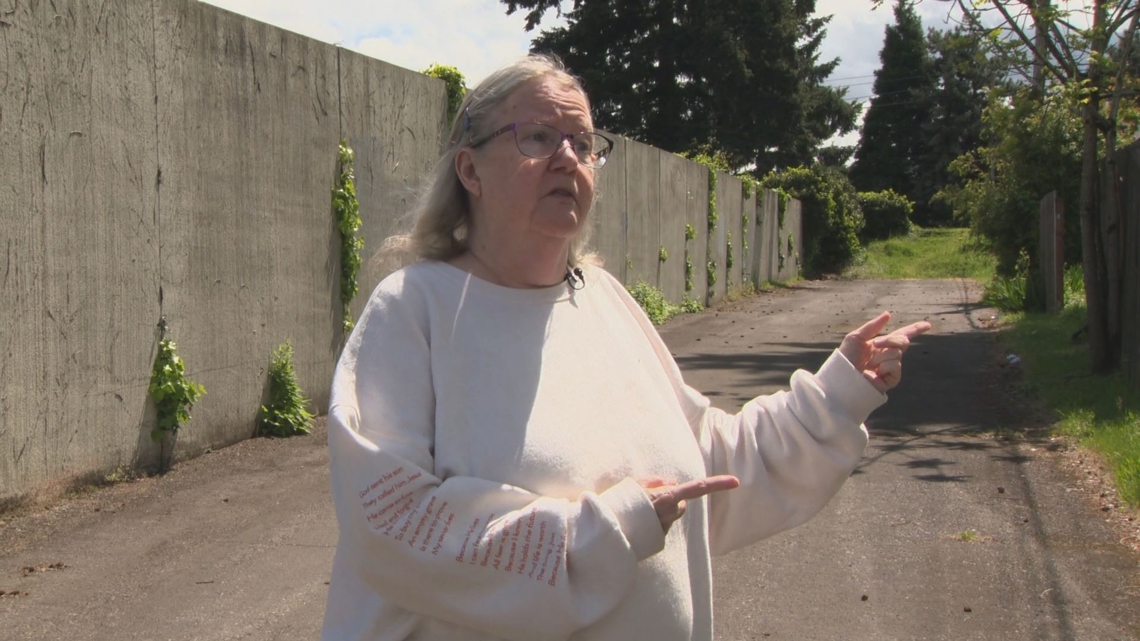
"Well then these guys said, we're going to do from 39th (Street), which us up there, all the way down. So to do that, if we have to raise this sound wall here-" she said, gesturing at a sound barrier across the street from her house, "-then we're going to have to take the house because we're going to have to drive these big bolts underneath."
CRC to IBR
The situation feels all too familiar for Schaub and Palmer, who both said their houses were similarly in the crosshairs during the previous major attempt at a replacement I-5 bridge — the Columbia River Crossing (CRC). That project famously imploded in 2013 before any shovels hit the dirt, but it got far enough into development to finish its Environmental Impact Statement and start exploring property acquisitions.
"Last time, 20 years ago, the gal goes, 'We want to acquire your house,'" Schaub recalled. "And I go, 'No, you want to take my house.'"
IBR is trying to reuse as much of the CRC planning work as possible in order to save time and money, which is why the project is producing a Supplemental Environmental Impact Statement — officially, it's an update to the CRC's full Environmental Impact Statement that was already approved.

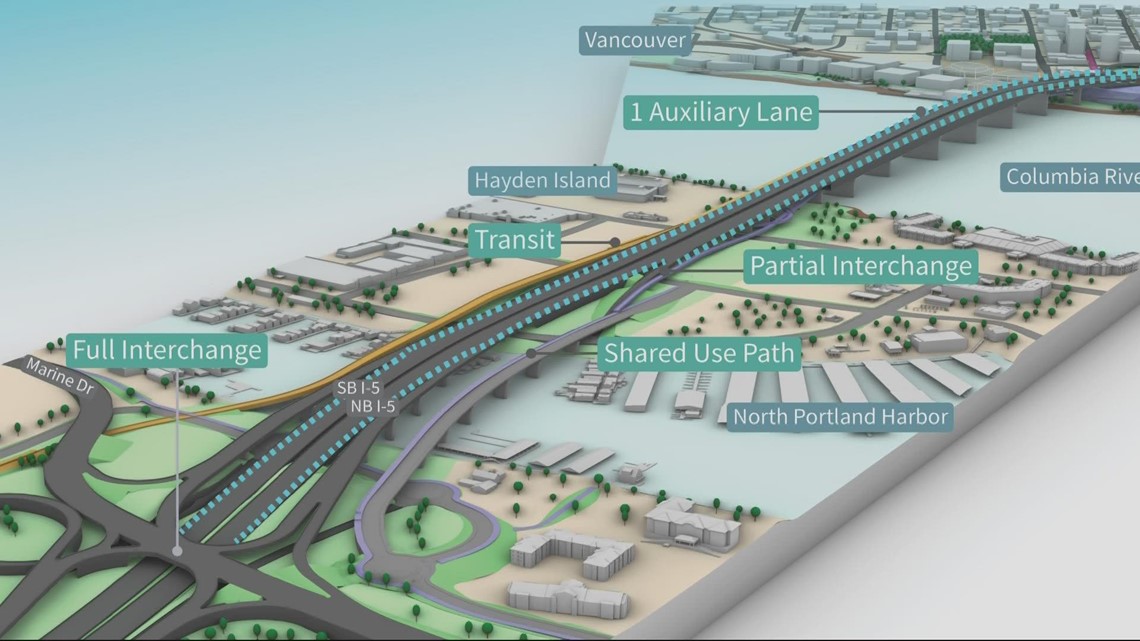
The two projects have similar footprints and share many of the same potential property impacts. It's not an exact match — IBR's proposed light rail route into Vancouver is substantially scaled back, for example, so the impact on downtown Vancouver streets will be lessened — but the impacted slice of Hayden Island is very similar.
IBR's property acquisitions document states that the current plan will displace fewer island businesses — though it adds, that's in part because several of those businesses have closed down anyway in the time since the CRC fell apart.
But there are also cases where the reverse is true — where new buildings have sprung up over the past decade, particularly in downtown Vancouver near the rapidly growing waterfront district. The Hurley building opened in 2020 on a previously vacant lot, and the Pacific Energy Concepts building opened in 2017 after extensively renovating a former car repair shop.
Scott said he invested in the renovations because he wanted the business to be in downtown Vancouver and he was betting on upcoming redevelopment to revitalize the area. The bet paid off — but that means finding a similar site in downtown Vancouver today would be that much harder, with less available land and higher prices for office space.

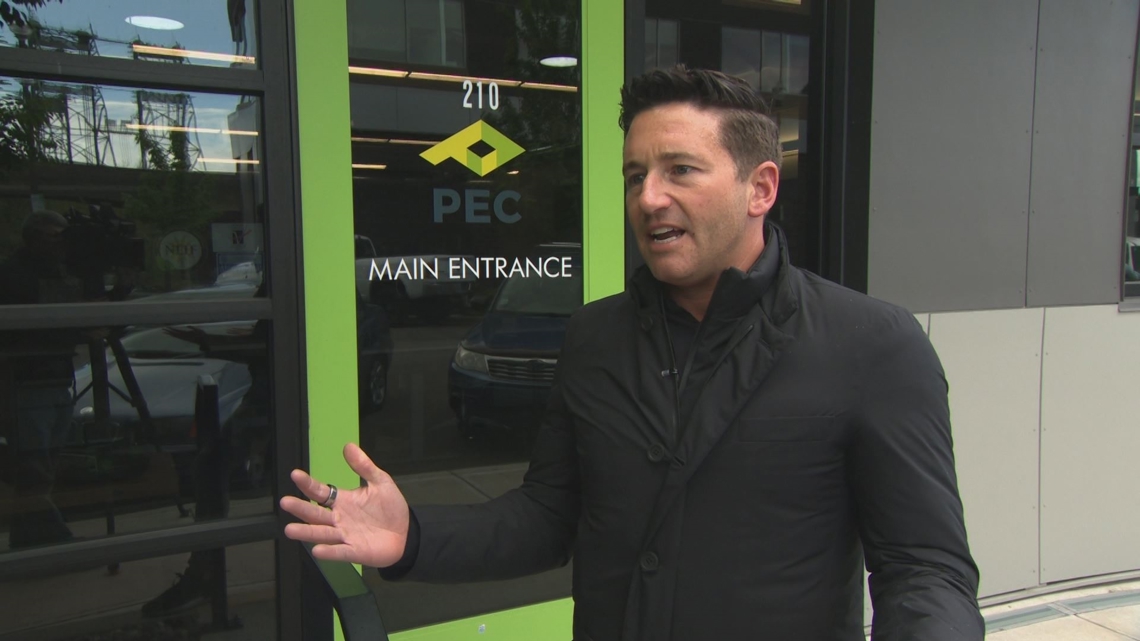
"It will be very, very challenging and also very, very expensive, to recreate what we have here. Some of my homework I've been doing, trying to figure out alternatives — all the alternatives are going to be at a significant financial investment for us," he said. "So I don't know how they plan on taking care of us and figuring that out, but I've been doing a lot of research on the eminent domain process and learning what to expect."
Asked about the possible property acquisitions, IBR confirmed that the draft SEIS will include an official list when it comes out later this year. Formal discussions about property acquisitions won't happen until the final version of the SEIS comes out and the federal government gives the project a green light to start construction, which the team hopes will happen sometime in 2025.

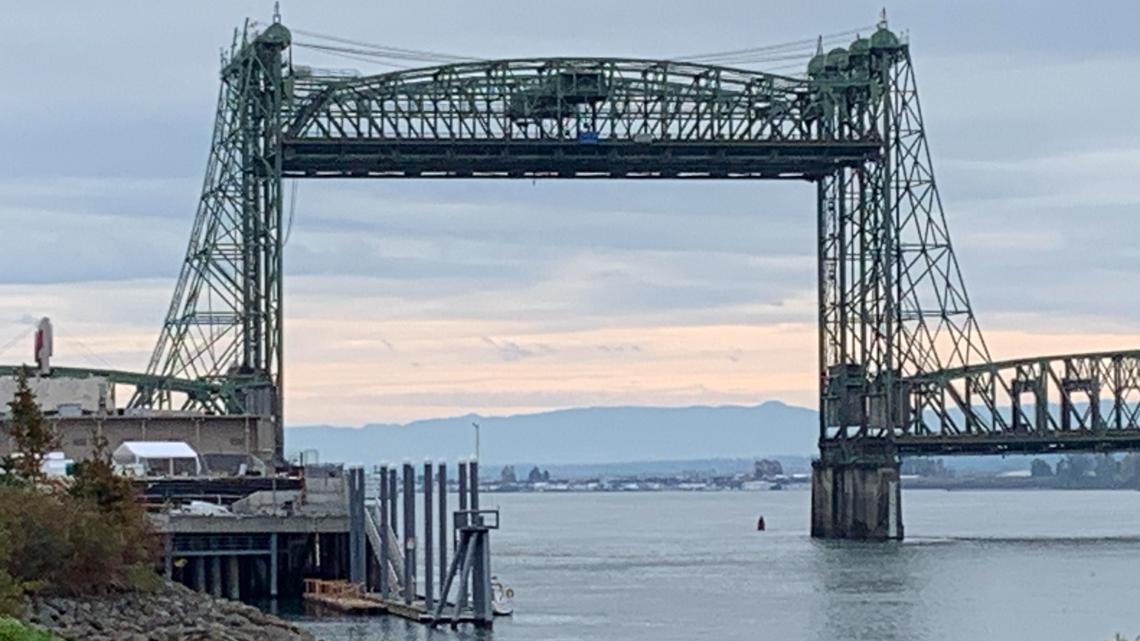
"The IBR program will do everything feasible to avoid, minimize and mitigate the impacts associated with its investments," IBR wrote in a statement. "No final decisions have been made about what will be built, and several steps remain before discussions around specific property impacts begin. Any affected property owners will be contacted well before construction if their property may be impacted."
But with the final SEIS still a ways away and the draft SEIS delayed, the common feeling among all the property owners who spoke to KGW was a sense of frustration at not being able to know for certain what's going to happen — or when it will happen.
"We were in limbo on the last one and we're in limbo on this one. So that's frustrating, of not knowing," Palmer said.

